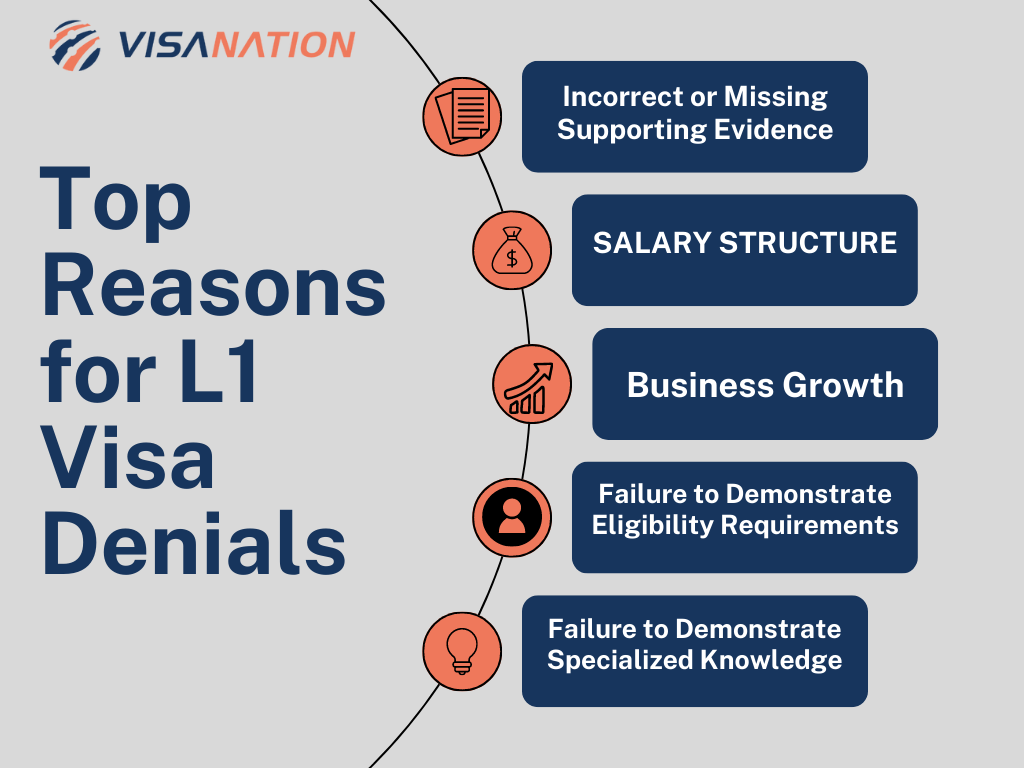Apply for L1 Visa
A Biased View of L1 Visa
Table of Contents7 Simple Techniques For L1 VisaGet This Report on L1 VisaL1 Visa - The FactsThe Best Strategy To Use For L1 VisaNot known Facts About L1 VisaLittle Known Facts About L1 Visa.Not known Facts About L1 Visa
The L-1 visa is an employment-based visa category developed by Congress in 1970, allowing multinational business to move their supervisors, execs, or key personnel to their U.S. operations. It is commonly referred to as the intracompany transferee visa.Furthermore, the recipient must have worked in a supervisory, exec, or specialized employee setting for one year within the three years preceding the L-1A application in the foreign firm. For new workplace applications, foreign employment has to have remained in a managerial or executive ability if the recipient is involving the USA to function as a manager or executive.
for up to seven years to supervise the operations of the U.S. associate as an executive or manager. If provided for an U.S. company that has actually been functional for greater than one year, the L-1A visa is originally approved for up to three years and can be prolonged in two-year increments.
The Only Guide to L1 Visa
If approved for an U.S. company operational for even more than one year, the initial L-1B visa is for as much as 3 years and can be extended for an extra 2 years. Conversely, if the U.S. firm is recently established or has actually been functional for much less than one year, the preliminary L-1B visa is released for one year, with expansions available in two-year increments.
L-1A visa holders can stay in the United state for up to 7 years, while L-1B visa owners can work in the U.S. for up to 5 years. L-1A visa can lead to an EB-1C immigrant visa, whereas L-1B visa can not lead directly to long-term residence condition.


Alternatively, if you have special or advanced expertise within your business, you might be eligible for transfer to the U.S. to use your specialized skills. The L-1 visa process entails complicated procedures, demanding comprehensive paperwork and cautious scrutiny of lawful needs on a case-by-case basis. Hereof, the assistance of a migration lawyer is important for making sure the successful conclusion of the procedure.
The L-1 visa stands as an essential tool for worldwide organizations, helping with the transfer of key employees between abroad and united state branches. Nevertheless, browsing the complexities of this visa group can be daunting. To lose light on this topic, we've assembled an extensive guide resolving the most frequently asked concerns regarding the L-1 visa: At its core, the L-1 visa enables international business to move certain staff members from international workplaces to U.S.
The smart Trick of L1 Visa That Nobody is Talking About
entities, such as parent, subsidiary, or affiliate. Furthermore, the staff member being moved have to have worked for the abroad firm for at least one continuous year within the preceding three years. Specialized expertise describes competence or understanding of the firm's items, solutions, processes, or procedures that is not easily offered in the U.S.
Yes, L-1 visa owners can bring their spouses and single children under 21 years of age to the United States on L-2 visas. Reliant family members are allowed to research in the U.S. and, sometimes, get employment authorization. L-1 visa holders might pursue permanent residency (environment-friendly card) condition through employment-based migration paths, such as the EB-1C classification for international supervisors and executives.
Citizenship and Migration Services (USCIS), together with supporting paperwork demonstrating the certifying relationship between the abroad and U.S. entities and the certifications of the worker being moved. While the L-1 visa is a popular option for intra-company transfers, there are alternative visa choices available depending on the person's credentials and circumstances.
Yes, partners of L-1 visa holders on L-2 visas are accredited to function without having to request work authorization. While there is no details need for L-1 visa owners to keep a foreign residence, they are expected to keep ties to their home country and intend to depart the United States upon completion of their accredited stay.
The residential employee must have been employed by the L-1 visa holder for a minimum of one year within the coming before 3 years and need to plan to function full-time for the visa owner in the united state. When obtaining an extension of remain on an L-1 visa, companies must continue to demonstrate the certifying relationship between the abroad and U.S.
L1 Visa Things To Know Before You Buy

and international entitiesProof of the staff member's duty and credentials (e.g., work summaries, organizational graphes)Proof of ongoing service procedures in both the united state and international areas The U.S. Citizenship and Migration Services (USCIS) supplies details definitions for vital terms: "The staff member's capability to make choices of large latitude without much oversight." "The capacity of the staff member to supervise and manage the job of specialist employees and to manage the company" or "to manage an essential feature of the organization at a high level, without straight guidance of others." "Special knowledge possessed by a person of the requesting company's products, services, research, equipment, methods, management, or other passions and its application in worldwide markets" or "sophisticated level of knowledge or competence in the company's processes click here and treatment." For new workplace L-1 requests, the company has to demonstrate financial ability and provide thorough strategies to develop procedures in the U.S

Indicators on L1 Visa You Should Know
L-1A visa holders (supervisors and executives) can expand their remain in increments of as much as two years for a maximum complete stay of seven years. L-1B visa owners (specialized understanding workers) can additionally prolong their visas in two-year increments, but they are restricted to a five-year stay. A worker who obtains the L-1 visa may additionally bring a partner and dependent youngsters (single and under 21 years of age) for the visa term.
If a company falls short to file an expansion of the covering petition in a prompt fashion, it does not set off a three-year waiting period prior to an additional covering petition can be submitted. This permits firms to keep their blanket L-1 status much more easily. Many L-1 visa holders take into consideration long-lasting potential customers in the United States, and a typical inquiry occurs concerning transitioning to irreversible residency.
L-1A visas are developed L1 Visa requirements for managers and executives, while L-1B visas are for workers with specialized understanding, as figured out by the USCIS. L-1A visa owners normally have more senior duties within the firm, looking after departments or running procedures. L-1B visa owners possess extensive knowledge of the firm's unique approaches, products, or solutions.
Some Known Details About L1 Visa
Both visa types are originally approved for one to 3 years, with the opportunity of expansions in two-year increments. Yes, spouses of L-1 visa holders (L-2 visa holders) are provided work authorization occurrence to condition. This indicates they no more require to submit a different application for employment permission to operate in the United States.